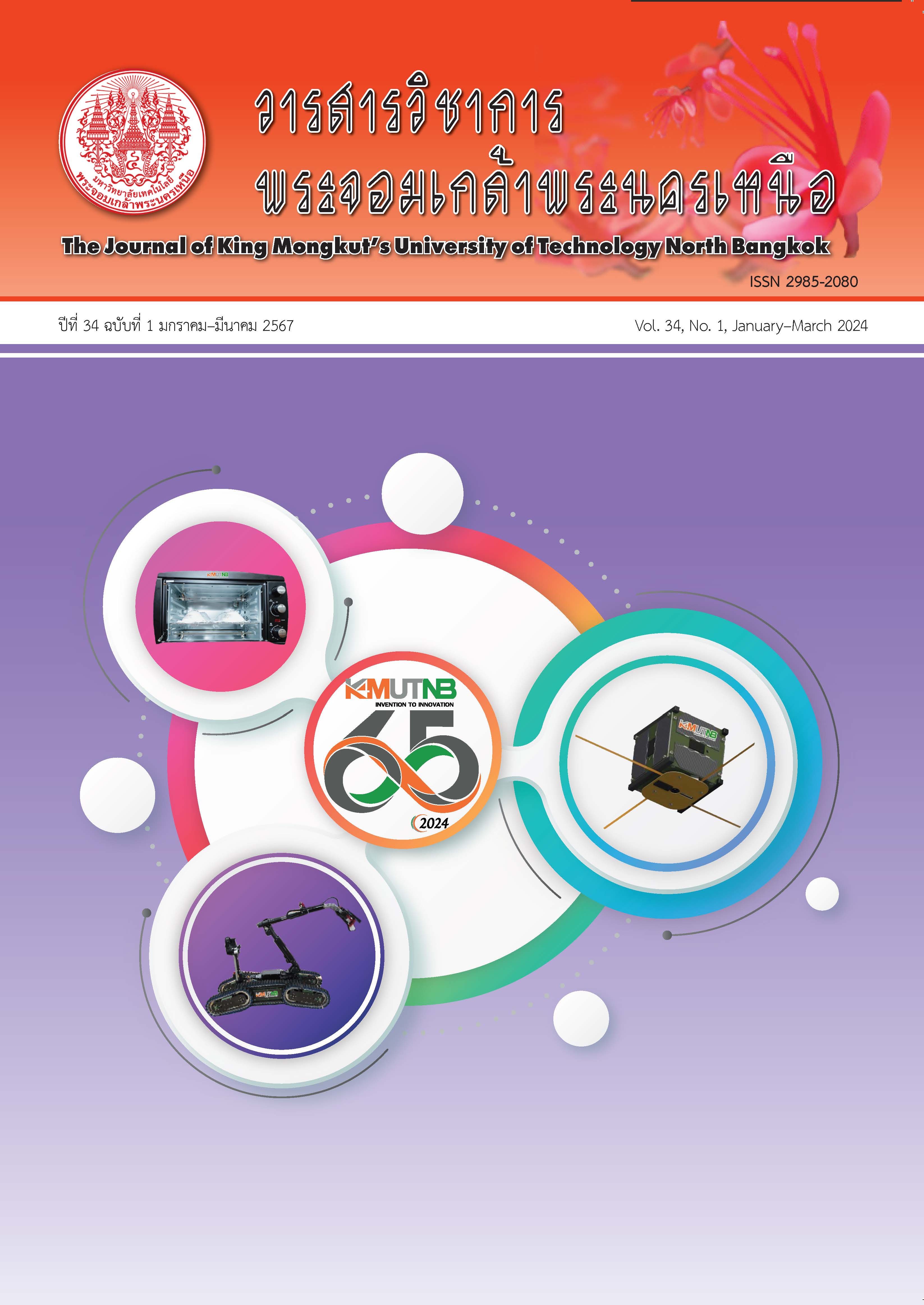แบบจำลองทางคณิตศาสตร์ของสมรภูมิทางอากาศโดยใช้แบบจำลองแลนเชสเตอร์
Main Article Content
บทคัดย่อ
ในงานวิจัยชิ้นนี้ได้พัฒนาแบบจำลองทางคณิตศาสตร์ขึ้นมาเพื่อวิเคราะห์ความแข็งแกร่งของกองกำลังสองฝ่ายที่ลดน้อยลงในการสู้รบระหว่างกันในสมรภูมิการรบทางอากาศ โดยแบบจำลองนี้ถูกพัฒนาต่อยอดมาจากพื้นฐานของแบบจำลองแลนเชสเตอร์ ที่นิยมใช้ในการจำลองการลดถอยลงของกำลังรบในสมรภูมิ ซึ่งแบบจำลองที่พัฒนาขึ้นมาในงานวิจัยนี้จะมีตัวแปรที่เกี่ยวข้องกับปัจจัยของการโจมตีและป้องกันทางอากาศ การตรวจจับและการรับรู้สถานการณ์ การป้องกันตัวเองของอากาศยาน ความสามารถในการเอาตัวรอดของอากาศยาน และความเสื่อมถอยของอากาศยานระหว่างทำการรบ โดยแบบจำลองนี้จะทำให้เห็นพฤติกรรมขั้นพื้นฐานและทำให้มีความเข้าใจในสมรภูมิการรบทางอากาศมากยิ่งขึ้น ซึ่งถือว่าเป็นขั้นตอนที่สำคัญสำหรับการวางแผนยุทธศาสตร์ของการรบ ทางอากาศ การวางแผนการทำภารกิจทางอากาศ โดยเฉพาะการนำมาวิเคราะห์เกมจำลองยุทธทางอากาศเพื่อใช้ในการเรียนการสอนในวิชาการจำลองยุทธ์ทางทหาร นอกจากนี้แล้วแบบจำลองทางคณิตศาสตร์ที่ถูกพัฒนาขึ้นมาในงานวิจัยนี้ ยังจะสามารถพัฒนาต่อยอดเพื่อใช้ทำนายสถานการณ์ของสมรภูมิการรบทางอากาศในอนาคตได้อีกด้วยเมื่อมีข้อมูลที่เพียงพอในการประมาณค่าตัวแปรต่าง ๆ
Article Details

อนุญาตภายใต้เงื่อนไข Creative Commons Attribution-NonCommercial-NoDerivatives 4.0 International License.
บทความที่ลงตีพิมพ์เป็นข้อคิดเห็นของผู้เขียนเท่านั้น
ผู้เขียนจะต้องเป็นผู้รับผิดชอบต่อผลทางกฎหมายใดๆ ที่อาจเกิดขึ้นจากบทความนั้น
เอกสารอ้างอิง
D. A. Novikov “Hierarchical models of warfare,” Automation and Remote Control, Vol. 74, no. 10, pp.1733-1752, 2013.
A. M. Novikov and D. A. Novikov, “Methodology,” M.: SINTEG, pp. 668, 2007.
F. W. Lanchester, “Aircraft in warfare: The dawn of the fourth arm,” Constable and Company Limited, London, 1916.
G. G. Brown and A. R. Washburn, “The Fast Theater Model (FATHM),” Military Operations Research, vol.12, no. 4, pp. 33–45, 2007.
H. W. Jones, “COSAGE User's Manual, Volume 1-Main Report,” Army Concepts Analysis Agency Bethesda MD, April, 1995.
E. S. Adams and M. Mesterton-Gibbons, “Lanchester's attrition models and fights among social animals,” Behavioral Ecology, vol. 14, no. 5, pp. 719–723, 2003.
D. D. Johnson and N. J. MacKay, “Fight the power: Lanchester's laws of combat in human evolution,” Evolution and Human Behavior, vol. 36, no.2, pp. 152–163, 2015.
S. Jørgensen and S. Sigué, “A lanchester-type dynamic game of advertising and pricing,” International Series in Operations Research and Management Science, Springer, vol. 280 pp. 1–14, Jan, 2020.
M. Stanescu, N. Barriga, and M. Buro, “Using lanchester attrition laws for combat prediction in StarCraft,” in Eleventh Artificial Intelligence and Interactive Digital Entertainment Conference, Sep, 2015.
S. J. Deitchman, “A lanchester model of guerrilla warfare,” Operations Research, vol. 10, no. 6, pp. 818–827, 1962.
M. Kress, “Lanchester Models for Irregular Warfare,” Mathematics, vol. 8, no. 737, pp. 5, 2020.
M. Sahni and S. K. Das, “Performance of maximum likelihood estimator for fitting Lanchester equations on Kursk Battle data,” Journal of Battlefield Technology, vol. 18, no. 2, pp. 23–30, July, 2015.
T. W. Lucas and T. Turkes, “Fitting Lanchester equations to the battles of Kursk and Ardennes,” Naval Research Logistics (NRL), vol. 51, no. 1, pp. 95–116, 2004.
N. MacKay, C. Price, and A. J. Wood, “Weight of shell must tell: A Lanchestrian reappraisal of the battle of Jutland,” History, vol. 101, no. 347, pp. 536–563, 2016.
P. R. Syms, “Validating Lanchester models: The first 60 years,” UK OFFICIAL, 2017.
P. Bogacki and L. F. Shampine, “An efficient runge-kutta (4,5) pair.” Computers & Mathematics with Applications, vol. 32, no. 6, pp. 15–28, 1996.
H. Musa, S. Ibrahim, and M. Y. Waziri, “A simplified derivation and analysis of fourth order Runge Kutta method.” International Journal of Computer Applications, vol. 9, no. 8, pp. 51–55, Nov, 2010.
T.Komiya and K. Iida “Deterministic Lanchester models of missile warfare Part II : Evaluation models taking account of the areal anti-air defense and scouting & fire control abilities,” National Defense Academy, vol. 42, no. 2, pp. 2–10, 2004.
T. Komiya, “Lanchester model,” Sankeisha, Nagoya, Japan, pp. 46–53, 2019. [20] J. X. Liu, S. H. Xu, J. S. Gao, and Y. Q. Yuan, “An integrated network/firepower operation model based on Lanchester equation,” Vibroengineering PROCEDIA, vol.17, pp. 112– 117, April, 2018.
K. Iida, “Theory of Operation research applied for nation defense,” Sankeisha, Nagoya, Japan, pp. 181–187, 2002.
R. E. Bach Jr, L. Dolanský, and H. L. Stubbs, “Some recent contributions to the Lanchester theory of combat,” Operations Research, vol.10, no. 3, pp. 314–326, 1962.

